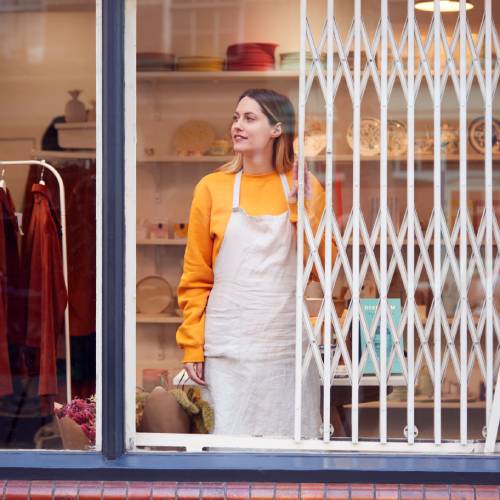
As retail security keeps changing, threats evolve right along with it. Shoplifters get smarter, organized theft rings move quickly, and employee theft can chip away at margins before you notice. If you want to protect your inventory, team, and profits, you need a clear plan that covers the types of physical security your retail business needs. Let’s explore some practical tactics you can act on today.
1. Security Cameras (CCTV)
You send a strong message to everyone in the building when you install security cameras. Shoppers behave better, and employees make sure to follow procedures because they know someone might watch the footage. Place cameras at entrances and exits to capture clear face shots and watch bag movement, and add one above high-value merchandise where quick grabs may happen. You should also cover return counters and cash wraps to reduce fraud.
2. Alarm Systems
After-hours burglars tend to look for easy targets, and an audible alarm can deter them. Build your system with door and window sensors for every entry point, interior motion detectors to catch movement after closing, and a simple control panel your team can arm and disarm without confusion. Place the keypad near your main staff entrance so employees can follow a consistent opening and closing routine. Pair the alarm with professional monitoring so responders act quickly when something triggers the system.
3. Access Control Systems
Lock down stockrooms, cash offices, and IT closets with key cards, biometric scanners, or keypad locks. Key cards work well for rotating staff and contractors because you can deactivate them in seconds. Biometrics help you prevent card sharing. Keypads cost less and still tighten security if you change codes regularly. Tie access control to employee time tracking so you know who entered a space and when.
4. Security Shutters
Thieves love storefront smash-and-grabs. Security shutters stop easy entry and create visible protection that makes would-be offenders move on. You can choose internal or external shutters, solid or perforated designs, and manual or motorized operation. Match the style to your brand so your shop still looks good after hours. This also protects glass from storm damage and cuts insurance risk.
Many retailers see lower losses and faster payback, which demonstrates a promising return on investment for installing security shutters.
5. Strong Employee Training
Security procedures work best when your team follows clear routines. Create simple opening and closing checklists, cash-handling steps, and bag-check guidelines for high-risk shifts. Pair new hires with experienced staff for their first two weeks. Many owners make a mistake when opening a retail store by skipping security training until something goes wrong.
A safer store protects your people and your margins. Start with a walkthrough to map risks, then layer these solutions based on your store’s layout, traffic patterns, and budget. Understand the types of physical security your retail business needs, review your setup each quarter, and invest where you see the biggest gains.
Leave a Reply